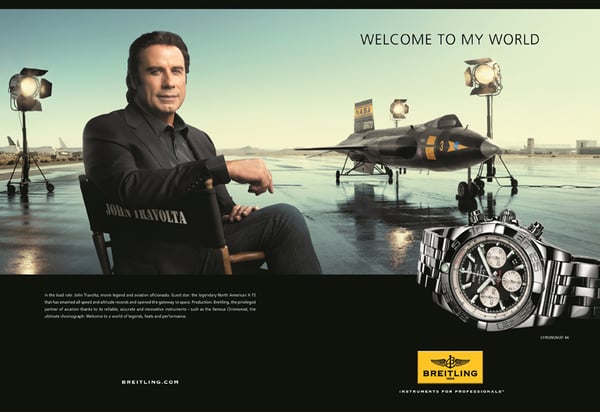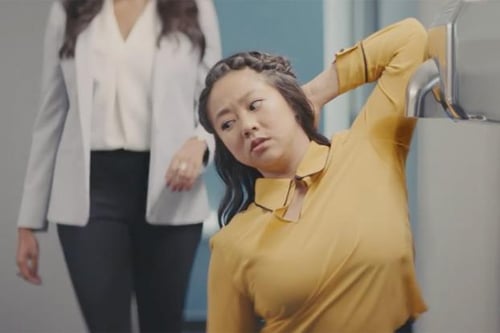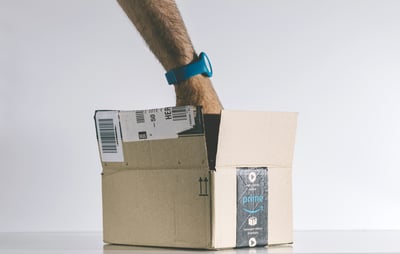September 30, 2025
 by Daniella Alscher / September 30, 2025
by Daniella Alscher / September 30, 2025

TikTok trends like #BamaRush and NFT hype have shown how quickly new waves of public sentiment can form — and fade — indicating the ongoing evolution of bandwagon advertising.
Licking a tub of ice cream. Eating Tide Pods. Hoverboards. The cinnamon challenge.
If all of your friends were jumping off a cliff, would you follow?
The fear of missing out was something that, at one point, only took place when having to miss an event that was the talk of the town. Now, the “events” are more abstract and take place all over the world. And you don’t even have to get out of your chair, thanks to social media.
Joining in with others to participate in trends, no matter how strange or dangerous, gives us some sense of belonging that we all crave. There’s no better feeling than hopping on that bandwagon.
Bandwagon advertising is a persuasive technique used by marketers to convince consumers to purchase a product, subscribe to a service, or adopt an idea primarily because "everyone else is doing it."
We all want to be included, and bandwagon advertising is advertisers’ way of telling us what we need to do in order to feel like we’re part of the crowd.
At its core, bandwagon advertising leverages the psychological principle of social proof — humans are inherently social creatures who look to others for cues about appropriate behavior, especially when making decisions under uncertainty. The fear of missing out (FOMO) and the innate desire to belong are powerful motivators that bandwagon advertising capitalizes on to drive consumer action.
This form of advertising often employs messaging and visuals that feature large groups of people, popular celebrities, or peer endorsements, all signaling that a product is widely accepted and trusted. For example, a software company might highlight that "over 10,000 businesses worldwide" trust their platform, or a beverage brand could show crowds of happy people enjoying their drink at major events. Such campaigns are not just about showing popularity — they are carefully crafted to trigger the viewer's sense that joining the crowd is the smart, safe, or even necessary choice.
Frameworks for bandwagon advertising typically involve three stages: identification (showing who the 'in-crowd' is), aspiration (portraying the benefits of joining the group), and invitation (encouraging the consumer to take action to become part of the group). Marketers often overlay these frameworks with social media campaigns, influencer partnerships, and user-generated content to amplify the effect. For instance, hashtag challenges and viral trends on platforms like TikTok or Instagram create a digital bandwagon where participation signals inclusion and relevance.
From a psychological perspective, bandwagon advertising taps into the concepts of normative influence (the pressure to conform to group norms) and informational influence (the assumption that the crowd knows best). While effective, this technique requires careful execution in B2B and tech sectors — G2’s users, for example, rely on authentic peer reviews to validate software choices. When bandwagon messaging is combined with transparent, verified user testimonials and robust data, it can significantly enhance credibility and conversion.
However, overreliance or false claims can backfire, eroding trust and damaging brand reputation. In summary, bandwagon advertising is most effective when it genuinely appeals to our social instincts, is grounded in genuine community sentiment, and complements a strong value.
There’s a careful balance in the art of bandwagon advertising. There are several ways in which an advertiser can use bandwagon advertising to pull a target audience closer to them, but it must be executed carefully in order to avoid backlash.
Related: Bandwagon advertising isn’t the only option you have when it comes to advertising techniques.
There are several ways in which bandwagon advertising can be used to sell a product, service, or idea. These resources offer critical frameworks and examples relevant for business professionals evaluating their next campaign.
This strategy positions your product or service as one that only a certain type of person uses; a type of person that everybody wants to be. These people are beautiful, wealthy, happy, healthy, and respected.
These aspirational qualities represent universal desires that effective advertising campaigns can tap into to drive consumer behavior.
Campaigns that use bandwagon advertising with the angle of desirability could be for almost anything. Place an expensive watch on a handsome man’s wrist as he closes a deal; a pair of headphones on the desk of a CEO; a drink at everyone’s place setting at the family dinner table.

Source: Breitling
Using desirability subconsciously plants the idea that if a consumer buys a product or service, their overall quality of life will improve; they’ll be seen the same way as they see the people in the advertisement.
This tactic is the opposite of desirability. Instead of focusing on what purchasing the product or service will do for the consumer, this stratagem focuses on what will happen if the consumer doesn’t purchase the product or service.
Portraying people as undesirable, asocial, unattractive, or unhappy in a commercial or print advertisement puts fear into the consumer’s mind. Using bright lights, vibrantly colored clothing, and uplifting music can all help to further depict that the person with the product is more desirable. This can be juxtaposed with poor lighting, dark clothing, and depressing music in scenes that depict the person without to the product as someone who doesn’t belong.
For example, Secret launched a deodorant commercial for their stress-tested antiperspirant. The commercial features a woman in the bathroom at work, standing under the hand dryer in a desperate attempt to dry out the sweat under her armpits. When a colleague walks in, our main character plays her odd positioning as yoga in order to avoid embarrassment.

Source: Secret
The commercial is focused on the embarrassment that someone can experience when the product being sold isn’t used.
Combining both the embarrassment and desirability techniques, the transformation bandwagon approach shows exactly what happens when someone who doesn’t use a product or service changes their mind and tries it out.
The beloved Betty White Snickers commercial is the first example that comes to mind. In it, a group of young men is playing a casual game of football. Mike, portrayed by Betty White, is doing such an awful job on his team that his friends tell him he’s playing like Betty White. Not a compliment.
Mike’s girlfriend calls him to the sidelines and convinces him to eat a Snickers, which transforms Mike into the accurate version of himself. He’s later portrayed as being able to be active and accepted by his friends again.
Source: YouTube
Mike starts out as the lovely but frail Betty White and, after a Snickers, transforms into someone more capable of playing the sport.
McDonald’s long-running slogan “Over 99 Billion Served” is a textbook example of bandwagon advertising. This phrase isn’t really about the food itself — it’s about social proof. By showcasing such a massive number of customers, McDonald’s implies that practically everyone has eaten there. The message subtly tells consumers: “If billions of people have already chosen McDonald’s, it must be the right choice for you too.”
This approach taps into the psychological principle of conformity, where people are more likely to adopt a behavior or make a purchase if they believe it’s popular or widely accepted. The slogan makes eating at McDonald’s feel less like a personal decision and more like joining a global community — something that’s already been validated by millions before you.
It’s a clever tactic because it doesn’t need to persuade you about quality or price. Instead, it convinces you through popularity. The underlying logic is simple but powerful: billions of people can’t be wrong.
Many companies and advertising agencies employ various bandwagon techniques in their advertisements as a way to lure potential consumers with appeals to their need to belong. When used thoughtfully, these tactics can drive engagement and conversions, but overuse or false promises can damage trust. Always align your messaging with authentic value, and consider integrating peer reviews or social proof to maximize impact.
For more on how to craft successful campaigns, check out our guide to advertising techniques or explore how to avoid false advertising for compliance best practices.
This article was originally published in 2019. It has been updated with new information.
Daniella Alscher is a Brand Designer for G2. When she's not reading or writing, she's spending time with her dog, watching a true crime documentary on Netflix, or trying to learn something completely new. (she/her/hers)
More than 140,000 third-party sellers made more than $100,000 in yearly sales this year.
 by Deirdre O'Donoghue
by Deirdre O'Donoghue
From speedy shipping to subscribe and save, Amazon is all about convenience.
 by Deirdre O'Donoghue
by Deirdre O'Donoghue
Amazon sells over 12 million products.
 by Deirdre O'Donoghue
by Deirdre O'Donoghue
More than 140,000 third-party sellers made more than $100,000 in yearly sales this year.
 by Deirdre O'Donoghue
by Deirdre O'Donoghue
From speedy shipping to subscribe and save, Amazon is all about convenience.
 by Deirdre O'Donoghue
by Deirdre O'Donoghue


